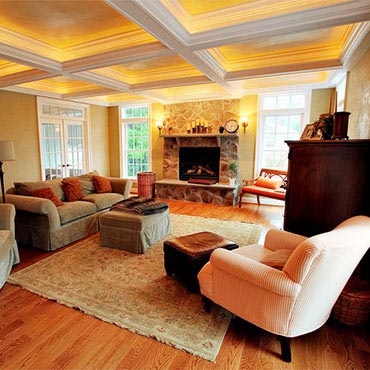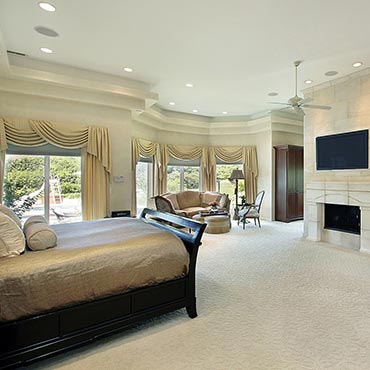

Guide

Kilim rugs is a tapestry rug woven from fairly harsh, thick wool. Kilim artistry is high compared to the price and there is a fantastic variety of Kilim designs. The best prices for kilims are often in long narrow strips rather than room size kilims.

Classic Tibetan designs exemplify our inspired recreations of an antique collection which once adorned the aristocratic estates of Tibet. Woven in Tibet from handcarved and handspun Tibetan highland wool.

Oriental rugs are fine crafted rugs that contribute nicely to any formal or informal setting in your home. Oriental rugs blend wonderfully with contemporary, formal, ornate, casual and traditional decorating styles.

Explore our extensive collection of Rug Runners! Perfect for hallways and narrow spaces, these beautiful, durable rugs add elegance and warmth to any room. Shop now to find the perfect design to fit your home's unique style!

Knotting by hand is most prevalent in oriental rugs and carpets. Kashmir carpets are also hand-knotted. Pile carpets, like flat carpets, can be woven on a loom.

Explore our Reproduction Antique Rugs, crafted to capture classic elegance with timeless appeal. Perfect for adding vintage charm and sophistication to any room.

Today, hand or machine made pile rugs in graphic, contemporary designs are produced. Although those by 'name' designers and one-offs commissioned for hand-weavers are obviously expensive, cheaper massed produced versions can be very reasonable.

The name Aubusson comes from a small town in the Cruse Valley, France. Carpets made in this manner have no pile and are woven with a traditional thick-thread tapestry weave on looms.

Explore Bessarabian Rugs, featuring intricate patterns and rich history. Perfect for adding a touch of classic elegance and craftsmanship to your home.

Discover the elegance of Bokhara Rugs, renowned for their rich colors and traditional designs. Perfect for adding a touch of timeless style to any room.

Discover the unique beauty of Caucasian Rugs with their intricate designs and rich cultural history. Perfect for adding a touch of tradition and elegance to any room.

The centuries-old Chinese textile industry is rich in history. While most antique carpets are classified according to a specific region or manufactory, scholars attribute the age of any specific Chinese rug to the ruling emperor of the time.

Carpet-weaving in Persia dates back to the Bronze Age. Common motifs include scrolling vine networks, arabesques, palmettes, cloud bands, medallions, and overlapping geometric compartments rather than animals and humans.

Muslims are often seen kneeling and prostrating on small embroidered rugs, called "prayer rugs." For those unfamiliar with the use of these rugs, they may look like small "oriental carpets," or simply nice pieces of embroidery.

The Savonnerie rug, aristocrat of rugs of the Western world, was first produced in 1628. The Savonnerie rug has a textured pile, knotted by hand in much the same manner as an Oriental carpet, with a Turkish knot.

Discover the vibrant patterns and rich textures of serape rugs. Perfect for adding a touch of color and cultural charm to any room.

Tribal rugs are part of a tradition very different from that of the finely woven floral carpets with which the name Persia has long been associated. Yet tribal rugs have a power and vitality of their own.

Turkish carpets (also known as Anatolian), whether hand knotted or flat woven, are among the most well known and established hand crafted art works in the world. The carpets are always hand made of wool or sometimes cotton, with occasional additions of s

Türkmen carpet (also called "Bukhara Uzbekistan") is a type of handmade floor-covering textile. The original Turkmen rugs were produced by tribes who are the main ethnic group in Turkmenistan and are also found in Afghanistan and Iran.

Flat woven area rugs are rugs that are woven on a loom, rather than knotted. Some well known examples of rugs made in this style include aubussons, kilims, sumaks, needlepoint, and tapestry rugs.

Area rugs made with wool are thought to be much more durable than those made with alternative materials, thanks to the naturally tough consistency of the substance.

Pakistani craftsmen have the capacity to produce any type of carpet using all the popular motifs of gulls, medallions, paisleys, traceries, and geometric designs in various combinations.

Under the patronage of the Mughals, Indian craftsmen adopted Persian techniques and designs. Indian carpets are known for their high density of knotting. Hand-knotted carpets are a speciality and widely in demand.

Traditional rugs from Afghanistan are tribal style with Blue, Cream, Dark Brown, Dark Navy Blue, Green, Red accent colors.

Discover the beauty of Anatolian Rugs, known for their exquisite craftsmanship and timeless elegance. Perfect for adding a touch of tradition and luxury to any space.

When comfort is the highest priority, wool carpet are the best because of wools unique combination of softness and springiness. Wool carpet is highly resilient, meaning it keeps it shape and maintaining its comfort for years.


